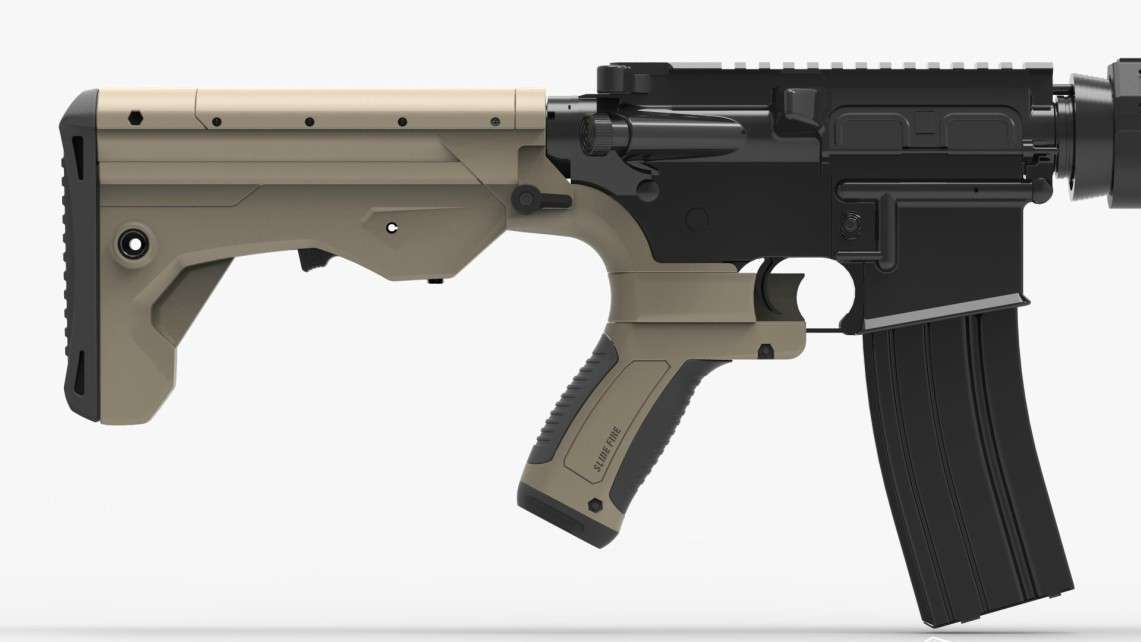Sessions Distorts the Law to Give Trump the Bump Stock Ban He Demanded
The attorney general pretends to discover that the controversial rifle accessories are already illegal.

In 2010, 2012, and 2013, the Obama administration said bump stocks were legal. Last week the Trump administration said bump stocks are illegal. The law has not changed in the interim, but the political considerations have.
Bump stocks, accessories that help people fire semi-automatic rifles faster, would still be legal if Stephen Paddock had not used them in the attack that killed 58 people in Las Vegas last October. Bump stocks would still be legal if Donald Trump had not felt a need to "do something" about gun violence without alienating the National Rifle Association (which supports an administrative ban). Bump stocks would still be legal if Trump had not instructed Attorney General Jeff Sessions to ban them. None of those factors, of course, has anything to do with what the National Firearms Act (NFA) says about bump stocks, which would be the decisive consideration in an administration that cared about the rule of law and the separation of powers.
Once Trump announced his intention to ban bump stocks, there was no way that Sessions was going to study the matter and tell the president, "You know what? The Obama administration was right. These things are legal." Having received his marching orders, Sessions had to rationalize the pre-ordained conclusion, and the result is the proposed regulation he issued on Friday, which strives mightily to make words mean something other than what they seem to mean.
Sessions needed to conclude that a bump stock—which harnesses recoil energy to make a rifle slide back and forth, repeatedly releasing the trigger after it is bumped against the shooter's finger—converts semi-automatic firearms into machine guns, which would make them illegal. His problem was that the NFA defines a machine gun as "any weapon which shoots, is designed to shoot, or can be readily restored to shoot, automatically more than one shot, without manual reloading, by a single function of the trigger."
A rifle equipped with a bump stock does not fit that definition, because it fires just one shot for each function of the trigger. Sessions tries to get around that obstacle by defining "a single function of the trigger" as "a single pull of the trigger" and defining pull to exclude what happens during bump fire. According to this account, when the trigger is activated by bumping against the trigger finger, that is not, contrary to logic and appearances, a "function of the trigger."
Another problem for Sessions is that a rifle equipped with a bump stock does not operate "automatically," since the shooter has to maintain "constant forward pressure with the non-trigger hand on the barrel-shroud or fore-grip of the rifle, and constant rearward pressure on the device's extension ledge with the shooter's trigger finger," as the proposed ban describes the technique. Sessions resolves that difficulty by treating the shooter as part of the rifle mechanism.
According to the regulation, "these devices convert an otherwise semiautomatic firearm into a machinegun by functioning as a self-acting or self-regulating mechanism that harnesses the recoil energy of the semiautomatic firearm in a manner that allows the trigger to reset and continue firing without additional physical manipulation of the trigger by the shooter." That gloss is accurate only if you ignore the role of the human who pushes the rifle forward to engage the trigger and if you insist that activating the trigger in that manner does not count as "physical manipulation of the trigger." Sessions claims this counterintuitive perspective reflects "the best interpretation of the term 'machinegun,'" by which he means the interpretation that facilitates the result demanded by his boss.
The question is not whether banning bump stocks is a good idea or whether it would save lives (although I am skeptical on both counts). The question is whether bump stocks are already banned. Although the Obama administration was much more supportive of gun control than the Trump administration, it repeatedly declared that bump stocks were legal, meaning that banning them would require a new act of Congress. Sen. Dianne Feinstein (D-Calif.), a dogged gun controller, agrees. This is one of the few gun-related questions on which Feinstein sees eye to eye with Rep. Thomas Massie (R-Ky.), leader of the Congressional Second Amendment Caucus. When you look at the law, you can see why: Only by stretching and distorting it can you achieve the end favored by the NRA, ordered by Trump, and finagled by Sessions
The Justice Department will accept comments on its proposed regulation until 90 days after it is published in the Federal Register, which does not seem to have happened yet. Assuming the ban is finalized, it will require all current owners of bump stocks to surrender or destroy them. Otherwise they will be guilty of possessing illegal machine guns, a felony punishable by up to 10 years in prison and a $250,000 fine. Manufacturers and retailers, who relied on the Obama administration's assurances that bump stocks were legal, also will have to destroy the products now that a different administration has decided to ban them by executive fiat.
Sessions presents himself as a law-and-order conservative, keen to enforce federal statutes and defend the Constitution, which includes respecting the separation of powers. It is hard to take that pose seriously after this shameful capitulation to presidential whims.
Update: The proposed rule was published in the Federal Register on March 29. Comments will be accepted through June 27.
Show Comments (149)